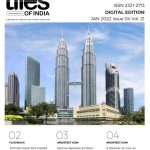Architect Cesar Pelli
Architect Cesar Pelli created myriad urban landmarks with one common attribute, their cloud-piercing stature.
Making tall buildings and reaching out for the sky is an ambition that runs deep in our human psyche. This same ambition drove architect Cesar Pelli’s creative work. Known as one of the 20th-century’s most prominent architects, his life-long ambition was to excel. Pelli was born October 12, 1926, in San Miguel de Tucuman, Argentina.
His father was a civil servant, who had been reduced to doing odd jobs due to the Depression, while his mother worked as a teacher. Pelli studied architecture at the Universidad Nacional de Tucumán. He graduated in 1949, after which he designed low-cost housing projects. In 1952, he attended the University of Illinois School of Architecture in the United States for advanced study in architecture and received his Master of Science in Architecture degree in 1954.
In the 1960s and 70s, Pelli gained hands-on experience designing high-rise buildings as an architect at various top American firms in Los Angeles. There, he contributed his expertise to a wide range of projects, including the futuristic design of the Trans World Airline Terminal at John F. Kennedy International Airport in New York and the American Embassy in Tokyo.
Through a breadth of ventures, Pelli came to recognize the need to steer away from the architectural fixation on creating an individual style and instead be adaptive, altering his designs depending on the place and purpose at hand. His aim was to create a new type of architecture that responded to new functions, materials, technologies, and social systems of the time. His myriad of urban landmarks including the elegant World Financial Center in New York and the innovative Twin Petronas in Kuala Lumpur range from public spaces to libraries, transport buildings, and performing arts centers all share one common attribute: their cloud-piercing stature.
Cesar Pelli believed that buildings require the influence of the environment and the purpose of the building to generate a design by utilizing local materials and those specific materials that present solutions to a design problem; he discarded those based on ideologies. Thus, Pelli never stuck with a hallmark aesthetic design for buildings to have a prominent signature but what stood out from them was the ability to bring out design aesthetics that do not impose the surrounding buildings in the context.
He resonated with humility even when his firm grew exponentially and created large-scale properties that gained critical acclaim to be iconic structures of contemporary architecture. In 1977, Pelli founded his own company, Cesar Pelli & Associates, and became Dean of Yale University’s School of Architecture.
He began focussing on the sculptural quality of design, using abstract glass shapes streaked with lines of colored metal or stone to create elegant, taut-walled edifices. His firm became distinguished for its work with the public, non-government-funded public space, such as the Pacific Design Center in Los Angeles – nicknamed ‘the blue whale’ due to its gleaming blue-glass cladding – and the expansion of the Museum of Modern Art (MoMA) in New York.
In London, his pyramid-roofed One Canada Square that opened in 1991 became an iconic symbol of the city’s powerful financial hub, Canary Wharf, and was the United Kingdom’s tallest building until the opening of the Shard in late 2010.
The American Institute of Architects named him one of the ten most influential living American architects in 1991 and awarded him the AIA Gold Medal in 1995. In 2008, the Council on Tall Buildings and Urban Habitat presented him with The Lynn S. Beedle Lifetime Achievement Award. He died on July 19, 2019.
Featured Image: Courtesy ArchDaily




GIPHY App Key not set. Please check settings